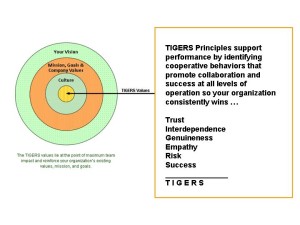 Everyone needs a break from work now and again, but no matter if an absence is planned or unplanned, overall productivity within the organization is affected, according to the “Total Financial Impact of Employee Absences” study commissioned by Kronos Incorporated and conducted in collaboration with the Society for Human Resource Management (SHRM). By focusing on team building activities, leaders can reduce employee absences and increase productivity.
Everyone needs a break from work now and again, but no matter if an absence is planned or unplanned, overall productivity within the organization is affected, according to the “Total Financial Impact of Employee Absences” study commissioned by Kronos Incorporated and conducted in collaboration with the Society for Human Resource Management (SHRM). By focusing on team building activities, leaders can reduce employee absences and increase productivity.
“Employee absences carry hidden costs that significantly affect an organization’s productivity and revenue – in fact, 75 percent of respondents perceived absence has a moderate to large impact,” said Evren Esen, director of survey programs, SHRM.
The study found that organizations suffer more negative effects of unplanned absences compared to planned absences, as organizations claimed that other workers suffered from disrupted and additional workloads as a result of unplanned absences. On top of decreased productivity, all paid time off, whether planned or unplanned, costs payroll 20.9 to 22.1 percent in the U.S.
Overtime is another costly expense of employee absences, as overtime was used to cover the missed work for 20 to 47 percent of absences in 2013.
“The more accurately employee absences are tracked and managed, the more effectively organizations can monitor, plan, and budget for this expense,” Esen said. “The impact to the bottom line of the business can be substantial, making it pertinent that organizations have a strategy to effectively track the costs associated with employee absence.”
Some ways that organizations can reduce absences and increase productivity are:
Promote volunteerism. According to Reward Your Employees With Time Off for Volunteer Work, organizations that offer their employees paid time to volunteer actually benefit from happier employees. Employees who find a passion outside of work are more passionate at work as well, which benefits the organization. This may seem counter intuitive, to encourage employees to be absent, but by promoting volunteerism, employees, their organization and those being helped all benefit. And by offering this time, organizations are better able to track and plan for these absences.
Offer other benefits. Offering paid time off is not the only perk that employees want, says Is Paid Vacation Really What Your Employees Want Most?. Rather than solely focusing on paid time off for employees, consider offering voluntary benefits, such as life insurance, retirement, short-term disability, dental and health coverage, which allow employees to choose the benefits that they need most. This way, both employees and leaders can feel good about the benefits that are offered.
Implement team building activities. Understanding how to form teams that can work together effectively is essential for an organization to thrive. All team members can own the outcomes and better understand requirements when they are part of the planning process. A clinic like the 6 Principles That Build High Performance Problem Solving Teams Leadership Clinic gives leaders and team members the chance to learn how to effectively work together and build successful teams.
“All workers need time off for a variety of reasons – from vacation time to relax, sick time to recover, and time needed to address the unexpected emergencies of life,” said Joyce Maroney, director, The Workforce Institute at Kronos. “However, the impact that absences can have on co-workers is a factor that should not be overlooked when examining the impact of absenteeism.”
Copyright TIGERS Success Series, Inc. by Dianne Crampton
 About TIGERS Success Series, Inc.
About TIGERS Success Series, Inc.
TIGERS Success Series is a Bend, Oregon team building consultant that focuses on high performance team work and cooperative organizational culture. The TIGERS model is research based and twice independently validated. The model is based on six principles that emerged from a meta analysis study in education, psychology and business group dynamic studies. The six principles are trust, interdependence, genuineness, empathy, risk and success. These six principles do not replace your organizational values. Instead they are anchored by behaviors that build high performance teams and cooperative work culture success. They actually make your vision, mission and values more dynamic and successful. Learn how to assess the levels of these six principles within your organization. They take all the guess work out of high performance team development.